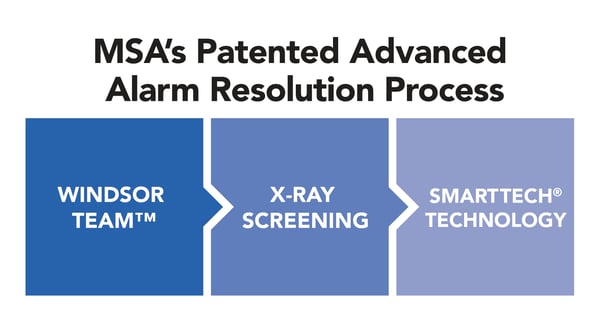With the aviation industry remaining a top national security priority, MSA developed its Patented Advanced Alarm Resolution (AAR) to support air cargo explosive screening requirements. While entities operating in regulated and unregulated environments are integrating explosive detection canines into their explosive screening programs for increased efficiency, a secondary alarm resolution process remains vital.
MSA’s Patented Advanced Alarm Resolution process combines three proven explosive detection screening solutions for complete alarm resolution:

The process blends state-of-the-art technology with uniquely qualified subject matter expertise to provide unmatched value. It successfully supports the industry’s mission to augment safety and enhance screening efficiency by:
Reducing the misinterpretation of suspicious items
Mitigating security risks and liability
Preventing potential service delays and business disruption
Minimizing unnecessary evacuations
Avoiding the mishandling of a true IED threat
Case Study: An MSA Windsor Team was working in the regulated space at a client site earlier this year when the explosive detection canine indicated on a package. The handler collaborated with the client’s security team to extract the suspicious package while the rest of the sort process continued without interruption. An on-site X-ray screener then ran it through an X-ray machine for analysis. To further ensure accurate image interpretation, the screener utilized SmartTech® to connect to MSA’s remote Emergency Operations Center. FBI-trained bomb technicians in MSA’s Emergency Operations Center communicated with the screener through audio, text, and pictogram to further analyze the image. Within 60 seconds, MSA’s bomb technicians issued a “non-detect” response, designating the package non-threatening. The entire process was resolved within minutes. MSA’s patented Advanced Alarm Resolution process makes business more efficient by eliminating unnecessary evacuations and minimizing disruptions.
